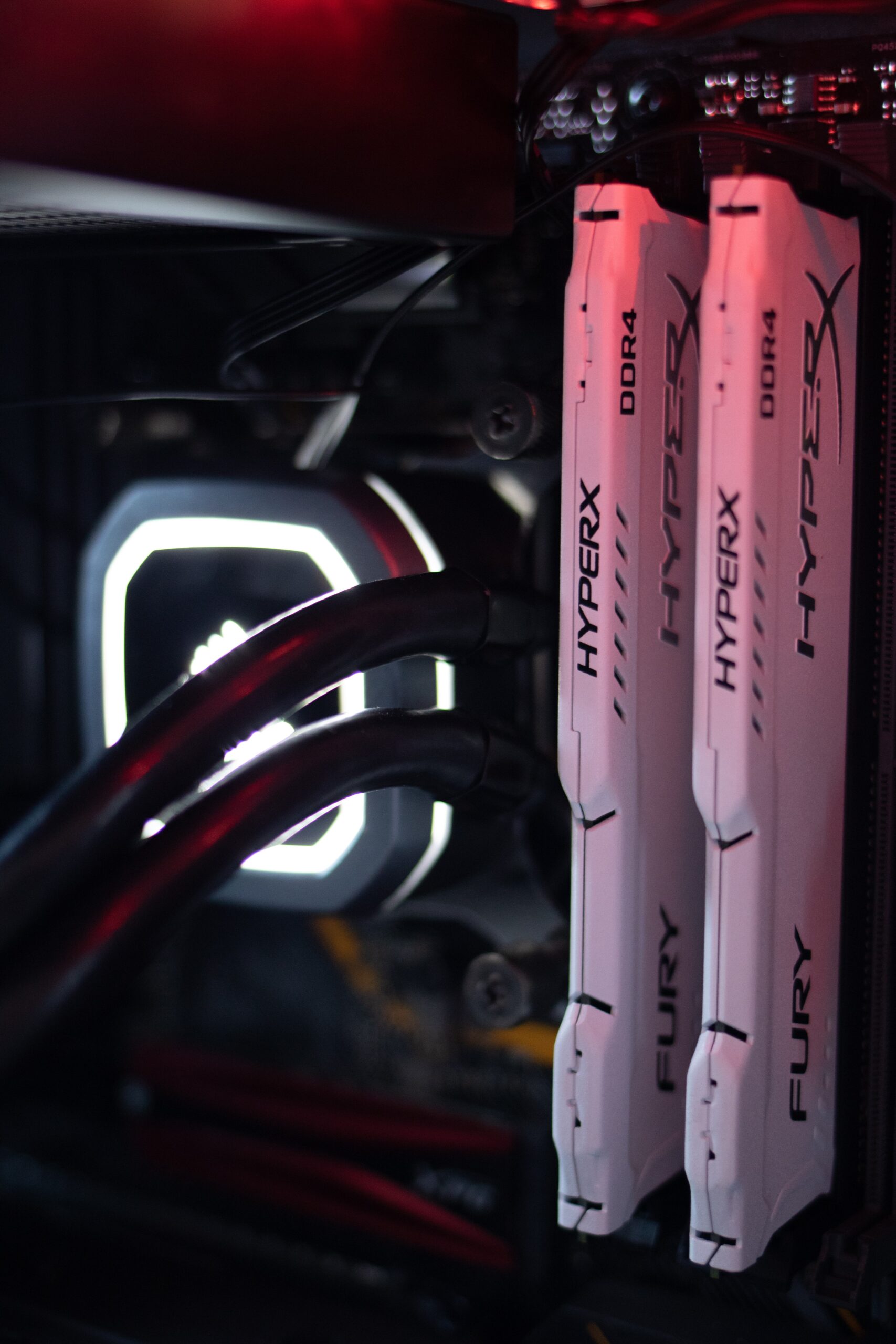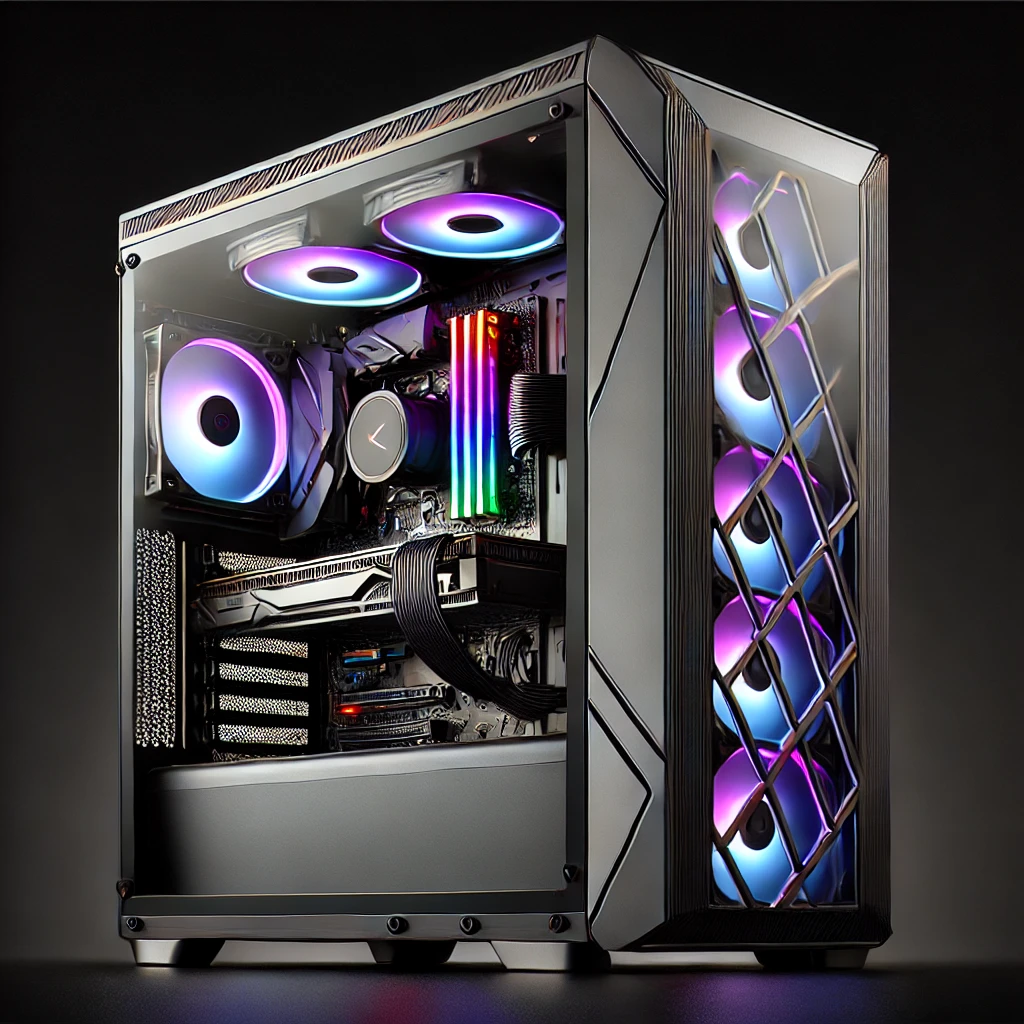Your cart is currently empty!

As the new owner of Lithgow Tech Services, I find myself facing an exciting challenge – building my very first gaming PC from scratch. While my expertise primarily lies in the realm of Apple computers, while we have an experienced tech who is amazing at building gaming computers, I’ve decided to roll up my sleeves and dive into the world of PCs. Why? Because, as a hands-on manager, I believe it’s essential to understand every facet of my business, and what better way to do so than by constructing a gaming rig myself?
Back in the late 1990s, during my stint at CompUSA in the US, I did assemble a gaming computer. However, I won’t rest on my laurels, as the tech landscape has evolved immensely since then. Games are more demanding, and building a gaming PC has become a more intricate affair. This blog post will chronicle my journey of building a new gaming PC, starting with budget considerations and game preferences.
Budgeting for Power and Performance
The first step in embarking on this gaming PC adventure is to assess my budget. How much cash can I allocate to this project, and how extravagant does my gaming rig need to be? Money is a critical factor, even for a tech enthusiast.
To strike the right balance, I’ve decided to set a reasonable budget that aligns with my gaming needs and business expenses. While I’d love to indulge in a top-of-the-line gaming machine, fiscal responsibility is a must.
Game Preferences: Defining the Hardware
Understanding the types of games you want to play is paramount when building a gaming PC. In my case, I have a particular affection for “Ark Survival.” Fortunately, this game doesn’t demand an astronomical graphics card, making my task slightly less daunting. Moreover, I’m not a fan of massive multiplayer games, which generally require beefier hardware.
With these considerations in mind, I can focus on selecting the right components that strike a balance between performance and budget, ensuring an optimal gaming experience for my preferences.
Selecting the Components
- Central Processing Unit (CPU): The brain of the PC. I opted for a high-end CPU to handle gaming and multitasking efficiently. A modern, multi-core processor ensures seamless gameplay.
- Graphics Processing Unit (GPU): Given my preference for “Ark Survival,” a mid-range GPU should suffice. However, I chose a GPU that is a little more powerful than the game’s minimum requirements to future-proof my system for upcoming titles.
- Memory (RAM): Games today benefit from ample RAM. I went with 16GB, which is a sweet spot for most gaming scenarios.
- Storage: Speedy storage is crucial for reducing load times in games. I opted for a combination of a Solid State Drive (SSD) for the OS and frequently played games and a larger Hard Disk Drive (HDD) for storage of less frequently used files.
- Motherboard: I selected a motherboard that supports my CPU and GPU while providing room for future upgrades. It’s essential to consider expansion options when choosing a motherboard.
- Power Supply Unit (PSU): To ensure my system gets a stable power supply, I picked a PSU with a bit of overhead to accommodate any future upgrades.
- Cooling: Adequate cooling is vital to maintain optimal performance and prevent overheating. I opted for a combination of air and liquid cooling to keep temperatures in check.
- Case: The case not only houses all these components but also contributes to aesthetics. I went for a case that supports good airflow and looks sleek.
- Peripherals: Don’t forget about peripherals like a gaming keyboard, mouse, and monitor. These can significantly enhance your gaming experience.
- Operating System: I installed Windows 10 for gaming compatibility, but you can choose your preferred operating system.
Assembly and Troubleshooting
Now comes the moment of truth – assembling the components into a functional gaming PC. This step can be both exciting and nerve-wracking, especially if you’re new to PC building. Here’s a simplified breakdown of the process:
- Preparing the Workspace: Ensure you have a clean, well-lit, and static-free workspace. Gather all your tools and components.
- Motherboard Installation: Start by mounting the CPU and RAM onto the motherboard. Connect the motherboard to the case and attach the necessary cables.
- GPU and Storage: Install the graphics card and connect your storage drives.
- Power Supply and Cooling: Connect the power supply unit, making sure all components have the necessary power connections. Install cooling solutions as per your hardware choices.
- Cable Management: Neatly route and secure cables to improve airflow and aesthetics.
- First Boot: Power up your PC and ensure it POSTs (Power On Self Test). If you encounter any issues, refer to your motherboard manual for troubleshooting.
- Operating System Installation: Install your chosen operating system and necessary drivers.
- Testing: Run benchmarks and stress tests to ensure your PC operates correctly. Check for any overheating issues and address them if necessary.
- Game On: Install your favorite games, and enjoy the fruits of your labor!
Upgrading and Future-proofing
Technology evolves rapidly, and your gaming PC may need upgrades down the line to keep up with the latest games. Keeping an eye on component compatibility and trends in the gaming industry can help you plan future upgrades effectively. Don’t hesitate to seek advice from tech experts when making major changes to your setup.
Conclusion
Building my first gaming PC has been a challenging and rewarding experience. It’s an excellent way to gain a deeper understanding of the tech world, even for someone like me with a background in Apple computers. The process involved careful budgeting, component selection, and patient assembly.
Now, armed with a powerful custom gaming rig, I can dive back into the world of gaming and enjoy my favorite titles, including “Ark Survival.” This journey has not only expanded my technical skills but also reignited my passion for gaming.
If you’re considering building your own gaming PC, don’t be intimidated. With the right research, a bit of patience, and a love for gaming, you too can create a custom gaming rig that suits your needs and preferences. Lithgow Tech Services is always here to assist you with your tech endeavors, whether it’s building a gaming PC or any other tech-related task.
So, gear up, tech enthusiasts! It’s time to level up your gaming experience by crafting your very own gaming masterpiece. Good luck, and may your framerates be high and your temperatures low!
Watch this space
I will continue to keep you updated as I build this computer.
Discover more from LithGeek Custom Gaming Computers
Subscribe to get the latest posts sent to your email.
Posted
in
by
Tags:


